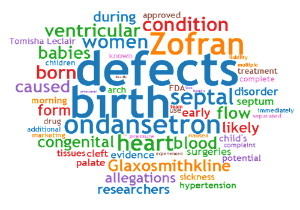- Home
- Editorial
- News
- Practice Guidelines
- Anesthesiology Guidelines
- Cancer Guidelines
- Cardiac Sciences Guidelines
- Critical Care Guidelines
- Dentistry Guidelines
- Dermatology Guidelines
- Diabetes and Endo Guidelines
- Diagnostics Guidelines
- ENT Guidelines
- Featured Practice Guidelines
- Gastroenterology Guidelines
- Geriatrics Guidelines
- Medicine Guidelines
- Nephrology Guidelines
- Neurosciences Guidelines
- Obs and Gynae Guidelines
- Ophthalmology Guidelines
- Orthopaedics Guidelines
- Paediatrics Guidelines
- Psychiatry Guidelines
- Pulmonology Guidelines
- Radiology Guidelines
- Surgery Guidelines
- Urology Guidelines
Air pollution causes of birth defects

Women who breathe polluted air during the month right before or after they get pregnant may be more likely to have babies with birth defects, a U.S. recent study suggests.
Researchers examined data on birth defects for almost 290,000 infants born in Ohio from 2006 to 2010, matching these records with air pollution measurements near mothers’ homes.
They focused on what’s known as fine particulate matter, or PM 2.5, a mixture of solid particles and liquid droplets smaller than 2.5 micrometers in diameter that’s found in traffic exhaust and can include dust, dirt, soot, and smoke.
Higher levels of PM 2.5 exposure in the month before and after pregnancy were associated with a small but statistically meaningful increased risk of congenital birth defects, the study found.
“Our study indicates that there are several particularly vulnerable exposure periods near the time of conception, both before and after conception, in which exposure to higher levels of particulate matter in the air may pose an increased chance for a birth defect to occur,” said senior study author Dr. Emily DeFranco of the University of Cincinnati College of Medicine in Ohio.
The impact of particulate matter on birth defects varied based on how far women lived from air quality monitoring stations.
Overall, when researchers looked at every mother in the study, women were exposed to average PM 2.5 levels of 13.79 micrograms per cubic meter of air (ug/m3) during the months just before and after they conceived. This included women who lived within 10 kilometers (6.2 miles) of an air quality monitoring station.
When researchers looked at a subset of women who lived within 5 kilometers of a monitoring station, they found that for every 10 ug/m3 increase in PM 2.5 levels women experienced during the month after conception, their babies were 19 percent more to be born with birth defects.
Certain types of birth defects appeared more strongly connected to air pollution, including abdominal malformations and what’s known as hypospadias, an abnormality in boys that occurs when the opening of the urethra doesn’t develop on the tip of the penis and instead forms on the shaft or on the scrotum.
At the time of the study, the U.S. Environmental Protection Agency standard for particulate matter levels was 15 ug/m3, while the current standard is 12 ug/m3, researchers note in the Journal of Pediatrics.
“Our study results support the importance of public health education and initiatives to minimize population exposure to airborne pollutants,” DeFranco said.
The study wasn’t a controlled experiment designed to prove whether or how mothers’ exposure to air pollution might influence the odds of birth defects in their babies. The study also only examined air pollution near women’s homes, and not necessarily near where they worked or spent the most time outdoors.
Even so, it makes sense for women to limit their exposure to air pollution whenever possible whether by avoiding outdoor commutes during rush hour or concentrating on indoor air quality, said Dr. Shruthi Mahalingaiah, an environmental health researcher at Boston University who wasn’t involved in the study.
“If you live in areas of the world with high levels of ambient air pollution, you may consider installing appropriate air or ventilation systems so that your in-home air quality is excellent,” Mahalingaiah advised. “Ideally, working together with policy makers, companies, and nations to reduce emissions and innovate around sequestering current levels of emissions would be a goal.”

Disclaimer: This site is primarily intended for healthcare professionals. Any content/information on this website does not replace the advice of medical and/or health professionals and should not be construed as medical/diagnostic advice/endorsement or prescription. Use of this site is subject to our terms of use, privacy policy, advertisement policy. © 2020 Minerva Medical Treatment Pvt Ltd